RackStuds are a product from New Zealand where we are left wondering: why did nobody think of this sooner. As part of our Datacenter #2 build-out we have expanded our capacity to test different types of products. After adding capacity in Las Vegas, Nevada, and taking a few cage nut cuts, we were in search of a better answer. A quick Google search led us to RackStuds. This three piece system is a replacement for traditional cage nuts and bolts that really is much easier to install. We sent a note to the RackStuds folks and they put us in touch with their local distributor DataCenter Gear in Cupertino, California who quickly got us a few samples for review.
RackStuds – Red versus Blue
As someone who has used cage nuts for years, I assumed that all square posts were of a uniform size. It turns out they are not, it is just that the cage nut masks complexity of slightly different sized posts. RackStuds are significantly less loose so without that play, there are two sizes: Red and Blue. When we got to the Fremont, California datacenter, we found the Red RackStuds, which work in the lab rack, did not work at the colocation facility. We changed to Blue RackStuds and they installed easily.
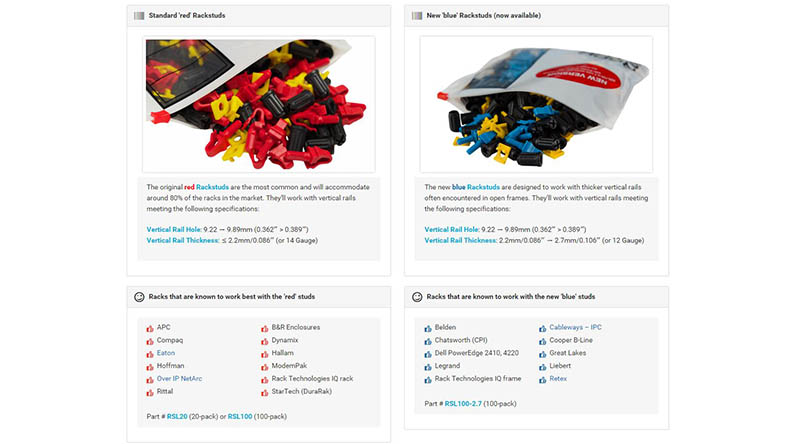
Our recommendation: Get a small test batch of both to see which fits your racks.
RackStuds – Installation
Installing RackStuds is incredibly easy. There are three pieces: the stud (Blue or Red), the washer (yellow) and the cap (black). Here is what the three components look like in various stages of assembly:
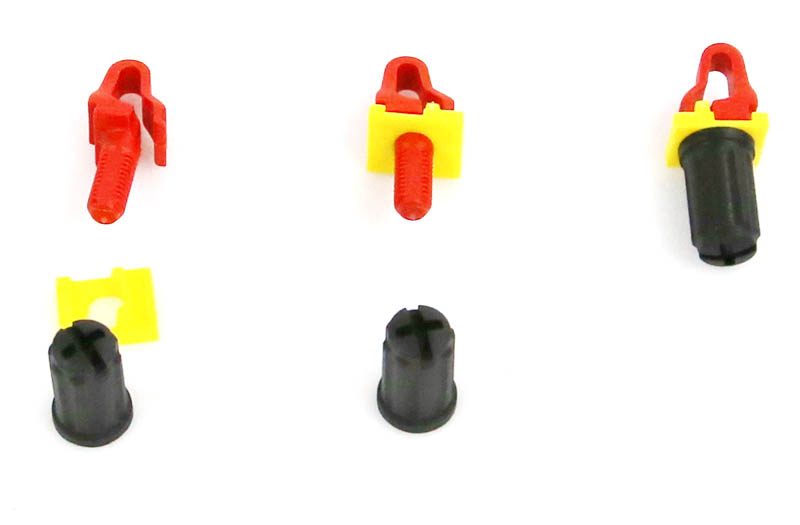
The installation sequence entails:
- Insert the RackStud from the front of the post. No need to reach behind like with a cage nut.
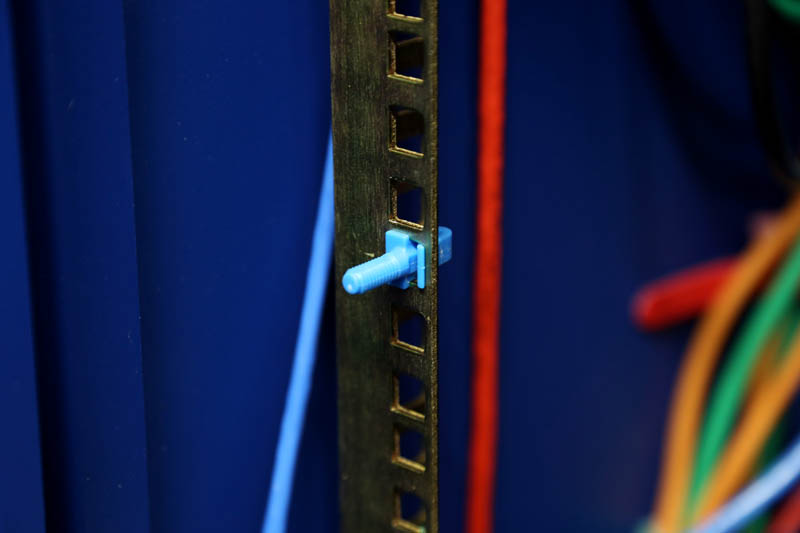
Blue RackStuds Post in datacenter rack - Add the yellow washer to the front.
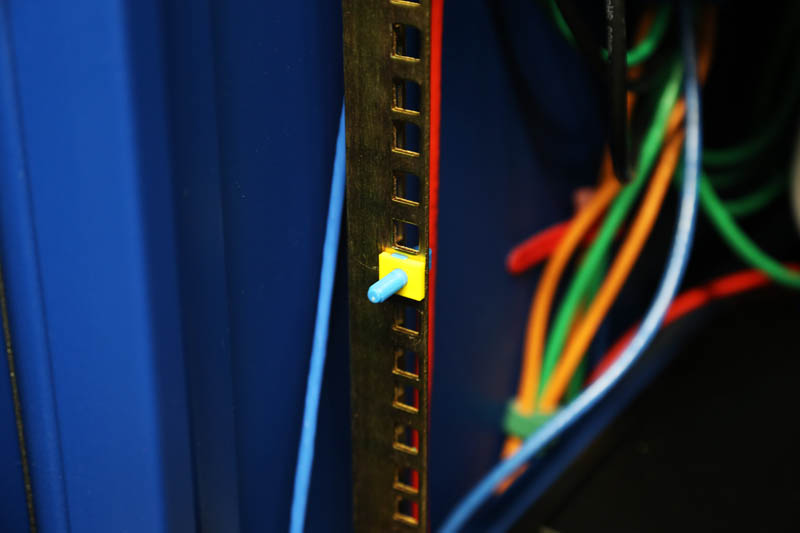
RackStuds Post and Washer in datacenter rack - Once equipment is mounted, screw on the black cap. You can hand tighten then screw it in if necessary.
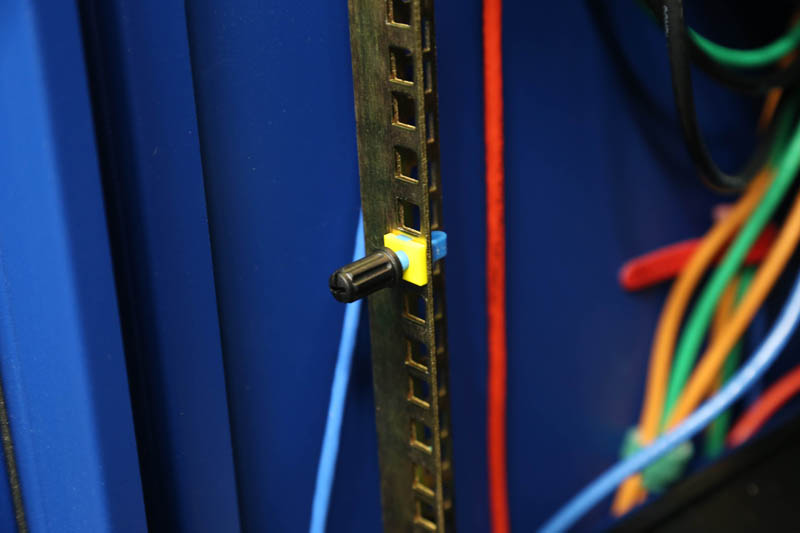
RackStuds Post Washer and Cap in datacenter
This sequence had a number of advantages. First, there was no reaching around to the rear of a post. If you are replacing a 1U server with equipment above and below, this saves the mystery drop issue where a cage nut falls into oblivion while on the other side of the post. The same thing happened when we uninstalled the units. Second, because the posts are all installed simultaneously it saves a hand when having to mount equipment or rails. Third, even with a cage nut tool, I was installing RackStuds at a rate of about one every 8 seconds which is less than half the time I install cage nuts in (including screwing equipment in.) Fourth, we did have some areas of the cabinet that were blocked by a Tripp Lite zero U PDU. The RackStuds were able to be installed in tight quarters where we would have never been able to get a traditional cage nut installed.
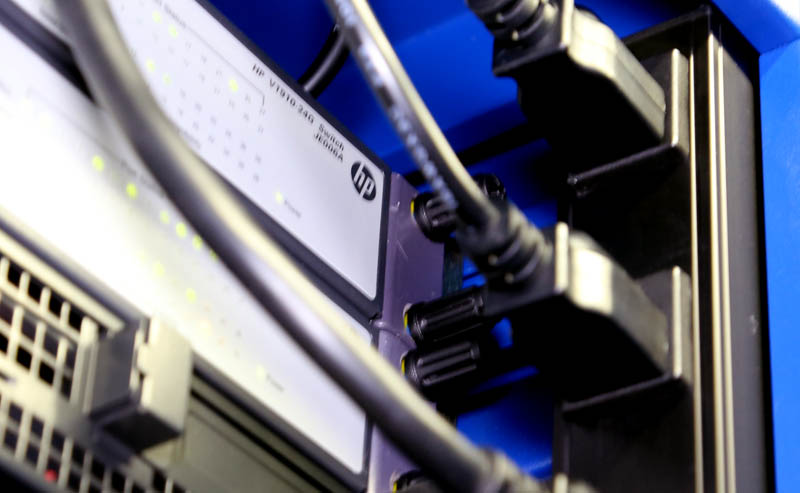
Fitting a screwdriver there would likely mean unplugging a few machines. With RackStuds the installation could occur without disturbing the equipment already running.
Testing the limits
RackStuds are rated for 44lbs each. The team has done a fairly good job showing tests using big Cisco routers, gym weights and even vibration testing to see the limits of the Grivory plastic/ glass RackStuds. Of course, we had to see how strong they were so we tried something a little bit different. We used a Supermicro CSE-512F-350B chassis installed with a dual Xeon motherboard with heavy copper coolers. The particular chassis has a very heavy 350w power supply and is interesting because it is a 14.5″ depth but no rackmount rails. As a result, there is a lot of weight placed on the rear of the chassis creating a strong lever on the RackStuds. The result:
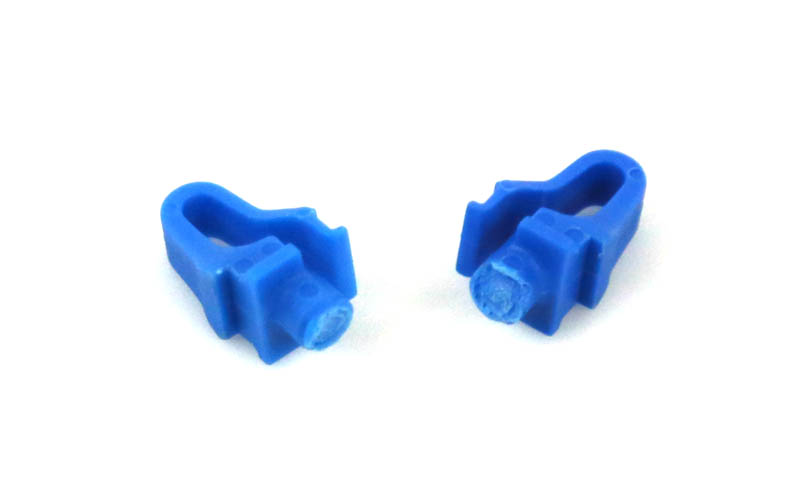
These snapped during the mounting process where we let the studs hold weight prior to fully securing them. A bit of momentum was generated when the rear moved down about an inch and the RackStuds snapped. On the other hand, shorter depth devices like our HP V1910-24G switches feel incredibly solid with two RackStuds on each side (see above for a photo). Mounting a medium depth server such as a Dell PowerEdge R220 using rails and RackStuds is no issue. Likewise with our Dell PowerConnect 8132 10Gbase-T switch. The key take away is that one does have to be slightly more mindful of the lever and momentum at the end of that lever.
Pricing
In terms of pricing, the RackStuds seem to retail for between $0.50 and $0.62 per stud in 100 unit quantities. For those in the US that want to try ASAP here are the Amazon links with Prime shipping:
- RackStuds 100-pack Red | Amazon.com (<2.2mm)
- RackStuds 100-pack Blue | Amazon.com (2.2mm – 2.7mm)
I should note that the DataCenterGear folks were extremely nice to work with. These are about 1.5-3x the cost of cage nuts (e.g. the Tripp Lite ones we use in our Las Vegas datacenter) but you probably save a minute every four installed so there certainly is value in the system.
Conclusion
We installed RackStuds in April but waited until the end of May to publish this review because we wanted time to see them perform over time. After hitting the limit on an install, the fact remains, they are time and time again faster to install and remove. For active development racks like we have in the Silicon Valley, these work exceptionally well with lightweight gear. We keep a wide selection on hand and did order another set for our Mountain View, CA lab and are keeping spares in Fremont, CA. Just to give one an idea regarding how impressed we were with these, we even purchased an additional 100 Reds for our test lab.
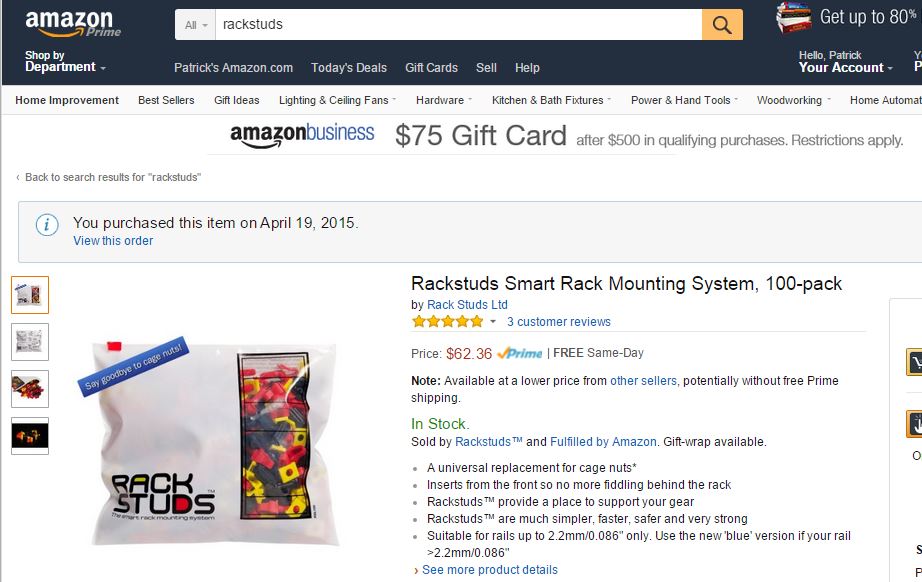





100 for $62 and change? Way too expensive.
You should see how much we pay our techs. If this saves an hour per bag it’s worth 4x the price difference to us.
I take it these don’t work with rails? Nor do they really have to, given how most modern rail systems slide the box into pre-installed rails.
Thanks Patrick. In regards the studs snapping, we have modified the bags now with an image that shows never to hang the gear on the two top studs. If you install your gear and thumb tighten the two bottom studs, you should be able to let go as I did in the Cisco clip on YouTube. Of course, you need to reverse the procedure for removal so they weight is always on the two bottom ones. Our Tutorials and FAQ pages were updated a while ago when we made the new bags. Unfortunately, all Amazon stock of the ‘reds’ has the older bags without the warning but if you got the new blue 100-pack, the warning label should be prominent bottom right.
Thanks again for the clear and concise review.
We have been using these for mounting ATS, Routers, Switches and shelves for about 2 years now. They work brilliantly.
I wouldn’t recommend mounting servers with them, but neither does the manufacturer.
No way on earth will plastic screws/clips ever replace metal screws and nuts.
Take those HP switches off the top of a server and try to hold them on the rails only.
We have mounted HP 25xx, 29xx, Cisco 2960X, Cisco 3750, Juniper EX4200 and Extreme Networks Summit x460 which are with these and they work just as well as metal cage nuts. Even on the Juniper and Extreme’s which are really heavy switches.
plastic. ummm… no.
What about plastic deterioration. How do they hold up to quick temperature changes that can occur when a cooling fault happen while in high tension by weight. Plastic is also much more prune to quality differences between batches.